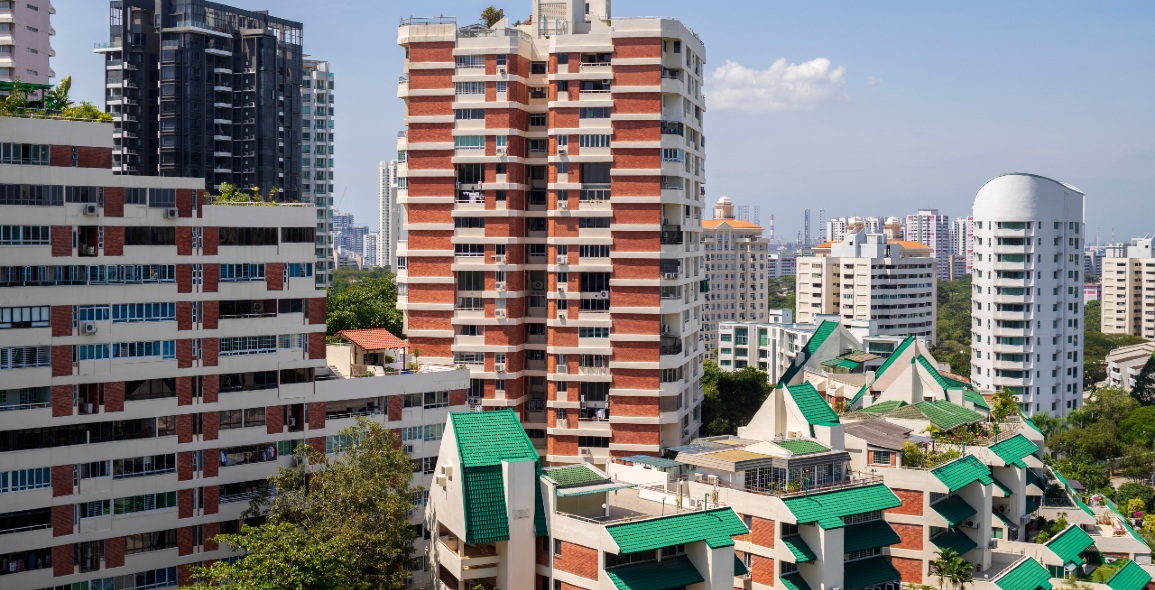
We’ve said a lot in the past five months about conserving our modern built heritage, including fleshing out why, detailing the environmental argument and taking you inside some of them to see just how liveable they are.
In the penultimate web story of this series, we now turn the focus onto what we hope the Singapore government will do from a policy and legal standpoint.
The reality is we are not asking for a reinvention of the wheel.
In the last 1980s to early 1990s, the URA developed six criteria to assess if a historical building should be conserved and 10 principles of conservation (read more here).
These could easily be adapted and applied to the modernist building inventory in Singapore.
The question is, what are we waiting for?
Here, we present perspectives and ideas from four other members of the design and architecture community.


Set up an inter-agency coordinating body to orchestrate the compliance process of building codes for conservation buildings.
In working with older buildings, there are often government compliance issues that make it difficult for them to meet the present requirements.
While it is not impossible for the architects to work with each relevant government agency to find performance-based solutions, trade-offs are usually necessary and the long-drawn process causes financial losses for private developers.
Some of the compliance issues need to be solved in a comprehensive and inter-agency manner.
It will help a lot if the members of this inter-agency coordinating body also understands the technical requirements for conservation and can build a database of past waivers that could apply for conservation situations.


I championed the need and importance of conserving selected modern heritage buildings before I retired in December 2008 as Chief Planner and Deputy CEO of URA.
Since 2000, my URA team had identified a list of post-war/modern buildings with merit for conservation and retention.
An exhibition was held at the URA Centre from November 2005 to March 2006 to raise greater awareness and appreciation of the wealth of our built heritage.
However, my team achieved only limited success by 2008. We then decided to document them in two books, known as Singapore 1:1 Island and Singapore 1:1 City.
I fully understand and appreciate the complexity of modern buildings, each of them has its own uniqueness and complexity.
To conserve them, we recognise the need for incentives but they have to be considered on a case-by-case basis.
Various ones were studied, such as bonus plot ratio, property tax credit, property tax abatement, property tax freeze, allowing a more flexible change of use, allowing partial demolition reconfiguration etc.
For modern buildings to be conserved, some of the current policies need to be modified:
1) Require only 80 percent of owners' consent to conserve instead of the current 100 percent;
2) Allow lease top-up upon restoration without the need to redevelop; OR
3) Create a new category, “Retention”, in place of conservation by disallowing en bloc demolition, and legislating it under the URA Planning Act.
I really like the title of the position paper published by the Singapore Heritage Society in August 2018, “Too Young To Die: Giving New Lease Of Life To Singapore’s Modernist Icons".
I had, in a short address at the URA's event in October 2019 marking Singapore’s 30-year conservation journey, called for the retention of selected modern buildings to be “reused and recycled” in the name of sustainability.
To me, if Singapore is still not prepared to legally gazette selected modern buildings for conservation, URA can, under the Planning Act, just disallow en bloc demolition and grant “Retention” status, requiring the MCST/owners to ensure their buildings continue to be kept in a good state of repair.
Alternatively, owners can sell their building en bloc with the “Retention” status from URA and enjoy fiscal incentives to restore and repair it.


Why is there a resistance to conserve? Because of systemic ignorance and convenience.
Ignorance persists of the value of preservation, over the convenience of demolishing.
The inconveniences of old age, repair, financial burden, seduction of financial windfall from en bloc. The momentum of growth that favours newness and freshness of ideas. The insecure need to constantly upgrade and improve.
Education over time may correct societal misconceptions or at least build up support or resistance to the dominant trend of tabula rasa.
Policies that need to enacted include economic incentives to drive/champion conservation, especially in the private sector:
1) Relaxation of land taxation or developmental charges on intensification.
2) Relaxation of current planning parameters (GFA computation, setbacks, building heights) as a trade-off.


URA’s proposal to conserve the Golden Mile Complex by offering a series of GFA incentives is a positive first step towards saving modernist buildings in Singapore.
In addition to taking care of the commercial viability, the authorities can approach it from an urban design perspective.
Particularly in relation to modernist strata malls, several of these buildings are located in a cluster (e.g. Golden Mile Complex and Golden Mile Tower, or Bukit Timah Shopping Centre and Beauty World Complex).
It is important to consider them as a collective entity when conserving them. Urban design guidelines can be put in place to allow for better connection in the public realm and enhance the heritage identity of the modernist building cluster.
URA already has an extensive urban design guideline for the Bras Basah.Bugis heritage district, and it can be extended to other modernist clusters.
Additionally, the government can consider developing public realm infrastructure to increase pedestrian connectivity, which could lead to more footfall in the buildings. This would indirectly increase the value of the modernist buildings.
The transformation of Sewoon Sangga, a modernist megastructure building in Seoul, is a case in point.
The city government built a series of elevated pedestrianised walkways and maker spaces.
This resulted in better urban connectivity through the building and led to a gradual, informal rejuvenation of a decaying modernist building, with younger tenants moving into the building running new businesses.
A simple infrastructure upgrade by the city government catalysed a new business and social ecosystem.


 Share
Share












